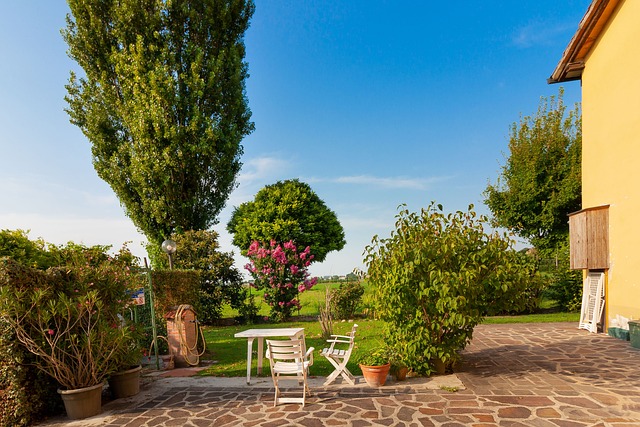The Whimsical World of Fairy-Inspired Garden Design
Welcome to a realm where fantasy meets horticulture, where tiny doors nestled at the base of trees and miniature castles perched atop mossy hills transform ordinary gardens into enchanted wonderlands. Fairy garden design, a captivating trend in landscaping, invites both the young and young-at-heart to create magical microcosms within their outdoor spaces. Let's embark on a journey through this whimsical world, exploring how to bring a touch of pixie dust to your own backyard.

The modern interpretation of fairy gardens as we know them today began to take shape in the late 20th century. Gardening enthusiasts and hobbyists started creating miniature landscapes complete with tiny houses, furniture, and accessories, designed to look like the perfect homes for fairy folk. This trend gained significant momentum in the early 2000s, coinciding with a growing interest in fantasy literature and a desire to bring whimsy into everyday spaces.
Design Elements of a Fairy Garden
Creating a fairy garden is an exercise in imagination and attention to detail. The key elements of a fairy garden typically include:
-
Miniature structures: Tiny houses, castles, or cottages serve as the focal points of fairy gardens. These can range from simple wooden constructions to elaborate, handcrafted pieces.
-
Scaled vegetation: Dwarf plants, mosses, and small-leaved herbs are perfect for creating a proportionate landscape. Bonsai techniques can be employed to keep plants small and in scale.
-
Pathways and water features: Pebble paths, miniature ponds, and trickling streams add depth and interest to the fairy garden landscape.
-
Fairy furniture and accessories: Tiny benches, tables, swings, and other accessories bring the garden to life and suggest the presence of its mythical inhabitants.
-
Lighting: Small solar-powered lights or battery-operated LEDs can create a magical glow in the evening hours.
Choosing the Perfect Location
The location of your fairy garden plays a crucial role in its overall effect and maintenance. Consider the following factors when selecting a spot:
-
Indoor vs. Outdoor: Fairy gardens can thrive both indoors and outdoors. Indoor gardens offer protection from the elements and year-round enjoyment, while outdoor gardens can be integrated into existing landscapes.
-
Sunlight requirements: If using live plants, ensure the location receives appropriate sunlight for the chosen species.
-
Visibility: Place the garden where it can be easily seen and appreciated, such as near a patio, along a walkway, or in a cozy corner of your yard.
-
Protection: If outdoors, choose a location that offers some protection from strong winds and heavy rain.
Plant Selection for Fairy Gardens
The choice of plants can make or break a fairy garden. Opt for species that remain small or can be easily pruned to maintain scale. Some excellent choices include:
-
Miniature conifers: Dwarf varieties of cypress, pine, and spruce add evergreen structure.
-
Succulents: Small sedums, echeverias, and hens-and-chicks provide interesting textures and are low-maintenance.
-
Herbs: Thyme, miniature basil, and chamomile not only look charming but also add fragrance.
-
Mosses: Various moss species create lush, carpet-like ground cover.
-
Miniature flowers: Violas, baby’s breath, and dwarf daisies add pops of color.
Remember to consider the growing conditions of your chosen location and select plants that will thrive in that environment.
DIY Fairy Garden Accessories
While many fairy garden accessories are available for purchase, creating your own adds a personal touch and can be a fun DIY project. Here are some ideas:
-
Acorn cap birdbaths: Glue acorn caps to small twigs to create charming birdbaths.
-
Twig furniture: Craft miniature chairs and tables using small twigs and hot glue.
-
Pebble pathways: Arrange small, flat pebbles to create winding paths through your garden.
-
Seashell planters: Use small seashells as tiny planters for succulents or air plants.
-
Bottle cap pond: Bury a bottle cap in the soil and fill it with resin to create a realistic miniature pond.
Maintaining Your Fairy Garden
Like any garden, a fairy garden requires regular maintenance to keep it looking its best:
-
Pruning: Regularly trim plants to maintain scale and prevent overgrowth.
-
Cleaning: Gently dust or rinse accessories to keep them looking fresh.
-
Seasonal updates: Change out plants or accessories to reflect the current season, adding pinecones in winter or tiny pumpkins in fall.
-
Plant care: Water and fertilize plants as needed, being careful not to overwater in the confined space.
-
Pest control: Monitor for pests and use natural deterrents to protect your miniature landscape.
The Therapeutic Benefits of Fairy Gardening
Beyond their aesthetic appeal, fairy gardens offer surprising therapeutic benefits. The act of creating and maintaining these miniature worlds can be a form of horticultural therapy, providing stress relief and a creative outlet. For children, fairy gardens can spark imagination and serve as a gateway to learning about plant care and ecosystems.
In retirement communities and nursing homes, fairy gardening has gained popularity as an activity that promotes fine motor skills, social interaction, and a sense of accomplishment among residents. The accessible nature of these small-scale gardens makes them ideal for individuals with limited mobility or space.
As we navigate an increasingly digital world, the tactile and imaginative aspects of fairy gardening offer a welcome respite, allowing us to connect with nature and our inner child simultaneously. Whether you’re a seasoned gardener looking for a new challenge or a novice seeking a whimsical entry point into horticulture, fairy gardens provide a unique and enchanting way to bring a touch of magic into your living space.





